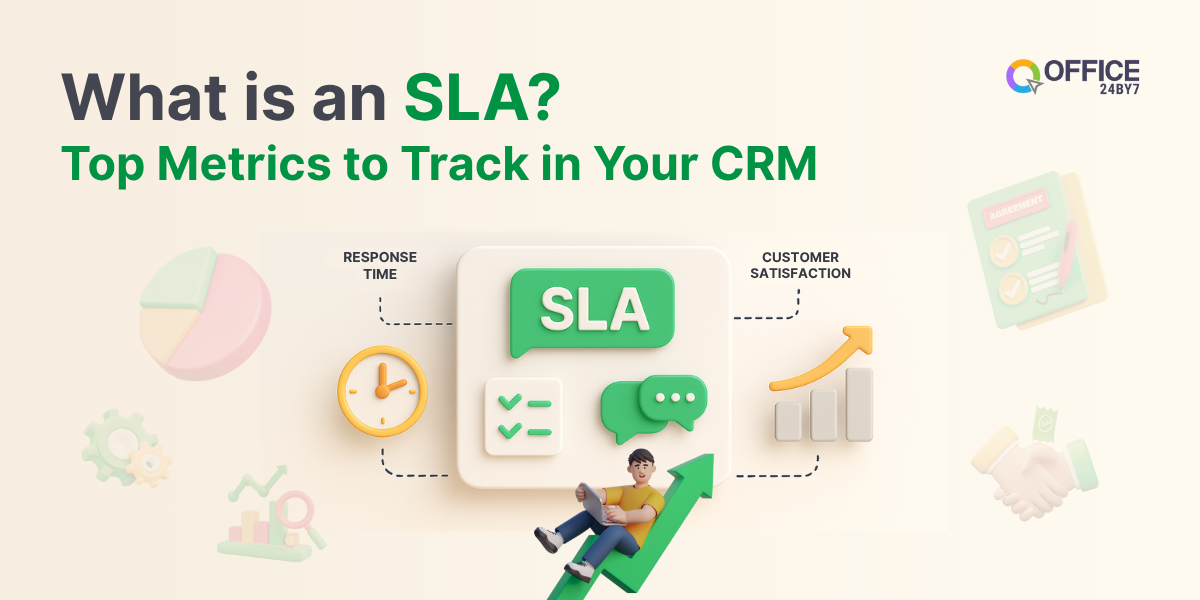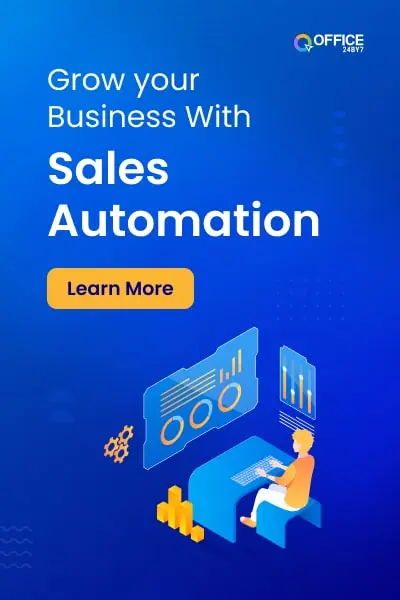Leads are the lifelines of companies, both online and offline. That is why 53% of marketers spend at least half their money on lead creation. However, just 21% of sales leads come from marketing. Managing leads is an important part of this process. Lead management allows you to re-engage inactive leads and turn them into customers by building confidence in your brand. Hence, investing in the best lead management software is essential for the success of any business.
This comprehensive guide will teach you all you need to know about lead management, including the best methods, tools, and software.
- What is Lead Management in CRM?
- Why is Lead Management Essential?
- How to Design an Effective Sales Lead Management System
- Using a Lead Management System
- Top 5 Lead Management Software in 2023
What is Lead Management in CRM?
Lead Management is the procedure through which a company gathers information about prospective consumers (leads) and keeps track of them until they complete a purchase. The number of leads will eventually become too large to handle effectively. This may result in lost leads, unsatisfactory lead engagement, and a lack of follow-up. When you have efficient CRM and lead management procedures in place, you can gather information about potential customers, work to convert them into buyers, and then pass that information along to the appropriate departments.
Read our B2B Lead Generation strategies that will work for your business.
Why is Lead Management Essential?
Producing new prospects may be a time-consuming and pricey endeavor. Businesses must also fill the customer relationship management system with qualified leads. Lead management becomes crucial in this scenario and helps businesses achieve a lot of benefits:
- Focus on qualified leads by sorting them into Good and Bad categories.
- Quickly determine the channels yielding the most promising leads.
- Improve the overall shopping experience of customers.
- Assist prospects in making educated purchases.
- Boost the efficiency of both marketing and sales.
How to Design an Effective Sales Lead Management System
Lead Capture in the Sales Funnel
Identifying where lead capture falls inside your sales funnel. The three levels of the sales funnel are “top of the funnel,” “middle of the funnel,” and “bottom of the funnel,” respectively. Transitioning website visitors from the “awareness” stage to the “conversion” stage is the one goal of lead capture.
Lead Generating Offer (Lead Magnet)
Consider employing lead magnets if you want more people to subscribe to your newsletter or sign up for your offer on your website or social media pages. Ebooks, content upgrades, checklists, eye-catching landing pages, lead generation forms, cheat sheets, swipe files, scripts, tool kits, resource lists, calendars, free tools, calculators, etc., are all examples of what you may get from these services. Provide the discount in return for their email address.
Office24by7 supports integrations with Facebook Lead Ads, LinkedIn lead generation forms, and Google Ads lead form extensions to automate this process. You may link your preferred platform with your CRM of choice with the help of these connectors. A constant stream of leads flows directly to your customer relationship management system.
You can also include a call-to-action (CTA) button in an existing picture or text on your website, blog, or social media platforms. When users click the call to action, a form appears, where they may provide information such as their name and email address.
Read our guide to understand what the IVR Calling System is.
Lead Tracking
Lead tracking refers to keeping tabs on prospective customers from their first point of contact until they purchase. It’s a one-stop shop for handling and monitoring anything from blog posts to social media efforts. Knowing the source of your leads, you may allocate more resources where they will do the most good. Search engines like Google, phone calls, contact forms filled out in response to blog posts, and other similar activities all count as inbound leads. Several channels, including email marketing, cold phoning, direct mail, and display advertising can be used to generate outbound leads.
Read our latest blog on Mobile CRM.
Lead Qualification
Unfortunately, only a small percentage of companies qualify their leads. Research shows that about 5%-10% of quality leads result in a sale for marketers. That’s why it’s crucial to vet your prospective customers carefully.
Lead qualifying aims to determine whether or not a potential customer has the means and interest to purchase your goods or services. Here are four models that may be used to sort potential customers:
1. BANT (Budget, Authority, Needs, and Timeline): An invaluable lead qualifying method if your company sells high-priced goods or services.
2. CHAMP (Challenges, Accountability, Money, and Prioritization): Evaluating a product or service’s viability in resolving a prospect’s problems.
3. MEDDIC (Metrics, Economic Buyer, Decision Criteria, Decision Process, Pain Point Identification, and Champion): A strategy for companies selling expensive goods, like software companies, may benefit from this approach.
4. ANUM (Authority, Necessity, Urgency, and Money): A method to put the buyer’s decision-making power ahead of the buyers.
5. FAINT (Funds, Authority, Interest, Need, and Timeline): It emphasizes the lead’s budget and power to purchase. As a bonus, it piques the prospects’ curiosity and fulfills their demands.
Understanding your Lead Generation: Why Does Your Business Need It?
Lead Nurturing
One of the most effective methods of turning leads into paying clients is lead nurturing. It involves targeting leads and consumers and sending materials at various points in the sales funnel to help them make purchasing decisions. Lead nurturing is crucial because companies who succeed at lead nurturing produce 50% more sales leads at a 33% reduced cost per lead. Providing customers at different stages of the purchase process with material tailored to them increases conversions by 72%. Consumers can better make well-informed purchases from businesses that regularly contact them.
Some of the most effective lead nurturing tactics include:
- Divide your email list into distinct groups to send tailored messages
- Use automation tools for email marketing
- Use various methods of nurturing leads like website info, mobile ads, social media content, etc.
- Distribute leads to various sales teams to engage potential customers with the sales staff that best fits their needs.
Using a Lead Management System
The best lead management software helps organizations gather, route, nurture, and convert leads to customers. CRM and lead management technologies employ interactive forms and post-click landing pages to collect leads. After leads are collected, they are followed through the sales process through phone calls, emails, meetings, and live chats via the lead tracking software.
Identifying high-quality leads is made easier with the help of an integrated lead scoring tool. When the program has enough information to make an informed decision, it distributes the leads to the most qualified sales representatives. Metrics like conversion and acquisition rates are just two examples of the information provided by the lead management software’s analytics and reporting features, which you can use to keep an eye on your leads and plug any holes in your sales funnel.
Top 5 Lead Management Software in 2023
Office24by7
Lead generation, lead scoring, and lead conversion are all made easier with Office24by7. It ensures the follow up of prospects and their progression through the different stages of the sales funnel in an orderly manner. This aids companies in gathering leads from landing pages and other lead sources by providing smart web forms. It includes lead scoring criteria to assist in sorting and filtering leads. Leads may be assigned to different sales representatives based on criteria such as location, product, and division using the predefined process rules. Leads nurturing can happen over the phone, by email, on social media, and in person.
Office24by7 is a powerful automation software tool, the best lead management software out there and offers integration with various tools in the market, different ad extensions, and many more.
Salesforce
The robust features of the Salesforce lead management system make it simple to monitor marketing return on investment, cultivate relationships with leads, and automate the sales process, among other things. With Salesforce, you can manage your leads and their data with ease. This allows you to track the source of leads and follow up with them via email. Leads can be given scores and directed to the appropriate departments with the help of an automated lead scoring and routing system. After that, you can distribute the leads to salespeople with the appropriate expertise to pursue them.
Office24by7 offers compatibility with Salesforce, so you can connect your two platforms easily. Salesforce may be linked with various other platforms, including but not limited to Facebook Lead Ads, MailChimp, ActiveCampaign, Facebook Custom Audiences, HubSpot, and more.
Hubspot
Manage all your leads in one convenient location with HubSpot’s lead management platform (i.e., on the dashboard). Sales data, business and contact details, and a log of all previous correspondence may all be found there. Leads may be managed and followed up on from a single dashboard in HubSpot’s system. The HubSpot CRM dashboard details sales representatives’ activities, including calls, emails, meetings, and more. From this data, you may assess the sales team’s efficiency and take steps to guarantee timely, suitable follow-up.
Here at Office24by7, we provide several HubSpot CRM connections so that you may link the platform with your preferred marketing and outreach apps.
Freshsales
Finding and following up on high-quality leads is a breeze with Freshsales’s lead management software. The data Freshsales collects from a lead’s many angles creates a comprehensive picture of the person. All calls, emails, texts, meetings, and other interactions with your company are counted here. You may sort your leads by their interest in doing business with you using the lead score function of your sales lead management system. With this information, you can prioritize your time and energy on the leads most likely to result in a closed deal.
Zoho CRM
Thanks to Zoho CRM‘s lead management system, more transactions may be closed in less time, which helps firms collect leads, move them down the sales funnel, and ultimately close on more of them. More qualified prospects may be generated, and their progress through the sales funnel tracked and scored in real-time with Zoho CRM. With lead management tracking software, you can avoid sales funnel bottlenecks and keep leads moving forward. The deal management tools let you handle deals in the sales funnel. Zoho CRM provides comprehensive reporting software for tracking the progress of a sales funnel, including features like sales forecasting, growth reporting, and predictive analytics.
Office24by7 provides Zoho CRM connectors, including those with Facebook Lead Ads, MailChimp, ActiveCampaign, and HubSpot.
Conclusion
Managing leads is crucial to expand your lead pool, improve lead quality, and increase the percentage of leads that become paying customers. Acquiring leads, following up with them, qualifying them, nurturing them, and ultimately distributing them are the five stages of the lead management process. If you want to build a lead management system to help your business, follow these steps. Lead management tools like Office24by7, Salesforce, Freshsales, Hubspot CRM, and Zoho CRM save you from doing it manually.
In addition, using lead management tactics like periodic database cleansing, upselling, and cross-selling consumers and integrating with a third-party tool like Office24by7 will aid in achieving more fruitful outcomes.


